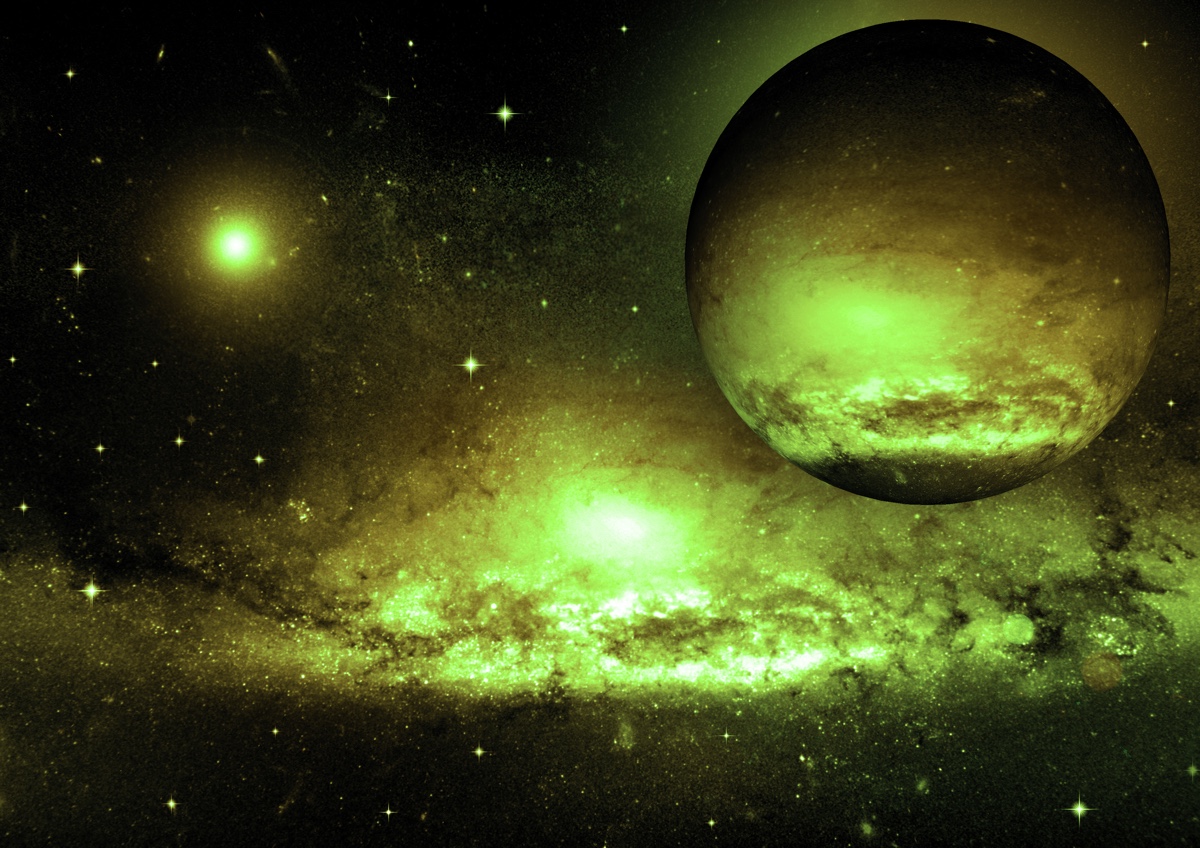On Alien Worlds, Extraterrestrials Could Be Spewing a Toxic, Smelly Gas. That's How We Could Find Them.

BELLEVUE, Wash. — Phosphine, a horrible-smelling gas that's toxic to life on Earth, could signal the existence of alien life-forms elsewhere in the universe. Why such E.T. would produce the gas is still speculative, but they could be using it as a form of cellular communication.
In the search for life in the cosmos, "it's no one's obvious choice," Clara Sousa-Silva, a molecular astrophysics postdoctoral associate at MIT, said during a talk presented yesterday (June 24) here at the Astrobiology Science Conference. For one, here on Earth phosphine is an "extremely flammable, incredibly toxic, outrageously foul-smelling molecule."
It's so reactive and requires so much energy to make, that it isn't favored by life on our planet and shouldn't really be found anywhere, she said. Even so, it's found ubiquitously across our globe in small amounts. [9 Strange, Scientific Excuses for Why Humans Haven't Found Aliens Yet]
Traces of this gas can be found in sewage, marshlands, the intestinal tracts of fish and human babies, in rice fields and in the feces of penguins. But all of these locations have something in common: They have no oxygen.
Phosphine reacts when exposed to oxygen and interferes with cells' ability to use oxygen to generate energy. "It's only phosphine's relationship with oxygen metabolism that makes it so toxic," Sousa-Silva said. (So much so that it was used as a chemical weapon during WWI). In oxygen-free environments, "phosphine is not so evil."
Other life on far-away planets free from oxygen "could happily produce phosphine," she said. Here on Earth, microorganisms in oxygen-free environments produce phosphine, though it's unknown how and why they spend so much energy to do so, Sousa-Silva told Live Science.
She speculates that life might be using phosphine for defense, to capture metals for biochemical processes or to communicate with other cells, she said. What's more, larger life-forms (such as humans) produce and release small bits of phosphine into the atmosphere through insecticides and activities such as methamphetamine production.
Get the world’s most fascinating discoveries delivered straight to your inbox.
So Sousa-Silva and her team wanted to see how plausible it would be to detect phosphine on various exoplanets. They simulated phosphine production, survival and destruction on various exoplanets — and found that under certain conditions, they could indeed detect the presence of phosphine by measuring how it interacts with light.
Their data suggested that this gas could be detectable if it's produced globally in concentrations comparable to those found in the atmospheres of oxygen-poor ecosystems on Earth such as sewage plants.
What's more, they found that phosphine wouldn't give any "false-positives." Sometimes, non-living phenomena (such as lightning) or geologic structures (such as volcanoes) can release gases such as methane or molecules that living organisms produce, fooling astrophysicists. [5 Times 'Aliens' Fooled Us]
"It appears that any detectable amount of phosphine on a rocky temperate exoplanet could only be produced by life," she said. Their simulations showed lightning and volcanoes, among other phenomena, can produce very tiny amounts of phosphine, that are negligible and not detectable.
Imagine a wet, oxygen-free "tropical paradise from pole to pole," she said. "This planet could potentially produce tremendous amounts of phosphine." The alien life-forms on that planet would likely find our oxygen-rich world super unappealing, she added. "Life can either love oxygen or love phosphine, but it can never love both."
However, the actual likelihood that a planet will produce that much phosphine to be detectable is still pretty low, she said. That is because phosphine requires a lot of energy to make and the phosphorous (one of the elements it's made from) is likely not found in large quantities on any planet, she added. But "just because a molecule is in low abundances and so has small impacts on the [atmosphere], it doesn't mean you shouldn't try looking for it."
Jihua Hao, a postdoctoral candidate at the University Claude Bernand Lyon in France who was not a part of the study but who attended the talk, agreed. "I don't know how much [the production rate] will reach the threshold to be detected," Hao told Live Science. But "it's a very promising signature."
Elisha Moore, assistant professor at Rowan University who was also not a part of the study but who attended the talk, thinks we should be looking for multiple biosignatures in combination. "It sounds really interesting … especially if you could detect it and link it to other potential biosignature gases," Moore said.
Indeed, this potential target is just one out of over 16,000 potential molecules that could serve as signals of life, Sousa-Silva said. "I know we shouldn't play favorites with biosignature gases, but if we did I would hope to convince you to be 'team phosphine.'"
The findings will be published in a forthcoming issue of the journal Astrobiology.
- 13 Ways to Hunt Intelligent Aliens
- Greetings, Earthlings! 8 Ways Aliens Could Contact Us
- 7 Huge Misconceptions about Aliens
Originally published on Live Science.

Yasemin is a staff writer at Live Science, covering health, neuroscience and biology. Her work has appeared in Scientific American, Science and the San Jose Mercury News. She has a bachelor's degree in biomedical engineering from the University of Connecticut and a graduate certificate in science communication from the University of California, Santa Cruz.


